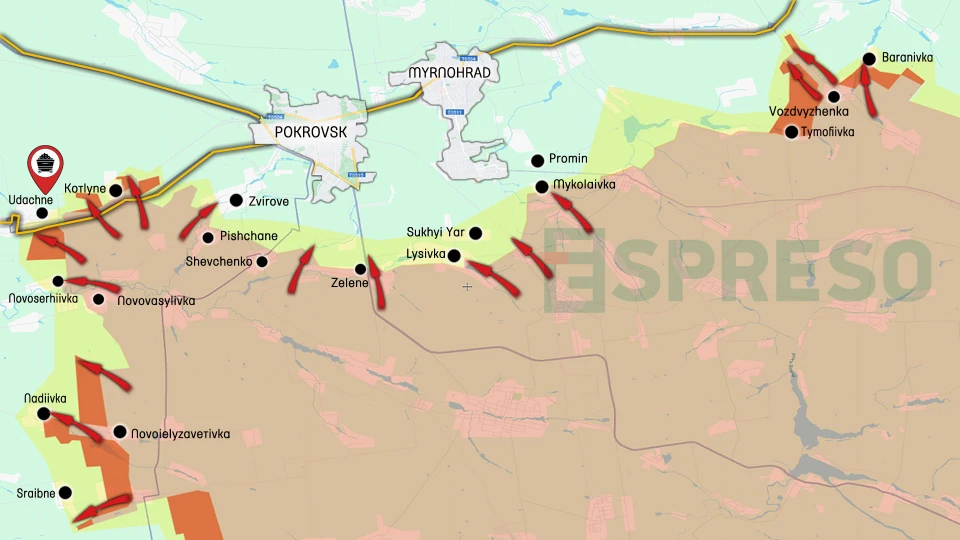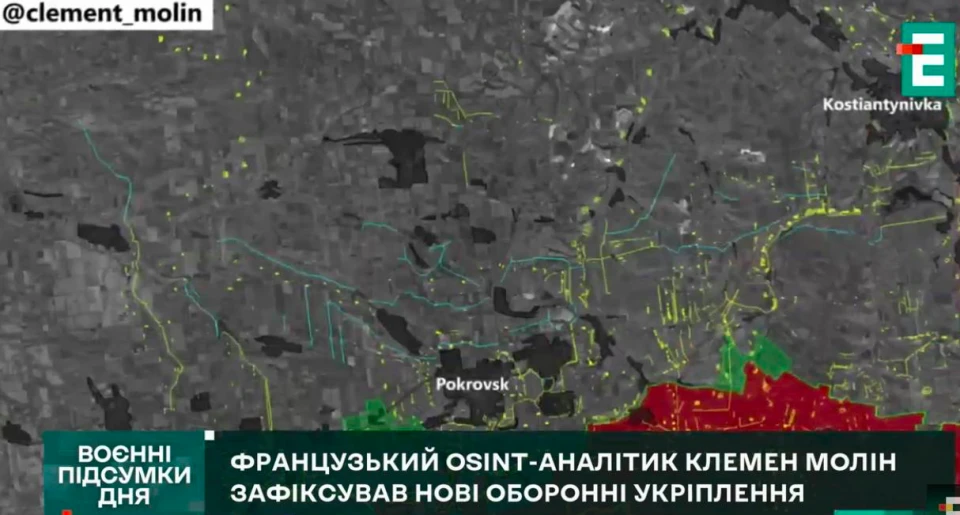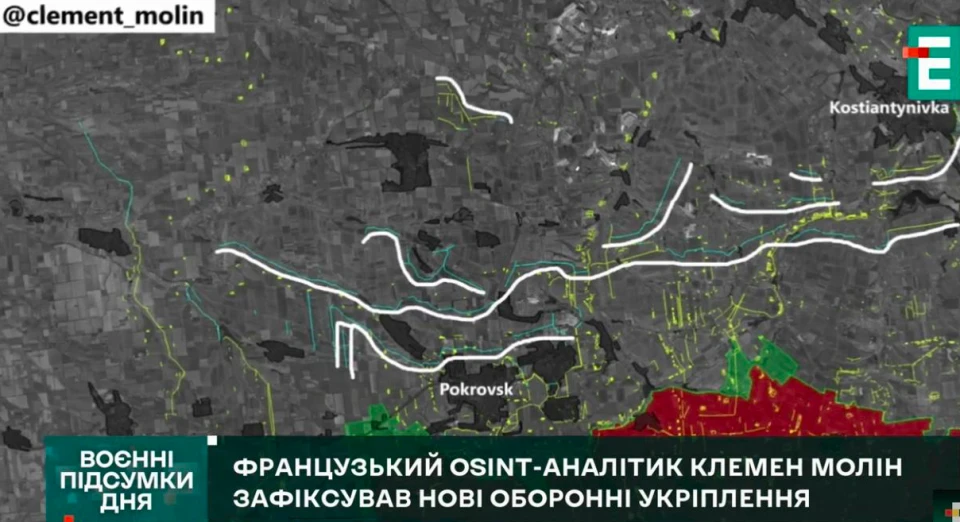
Ukrainian forces counterattack, pushing Russian troops back in Pokrovsk direction. Serhiy Zgurets' column
The Pokrovsk direction is the most challenging direction, from Uspenivka and Udachne in the west to Vozdvyzhenka and Baranivka in the east. Ukrainian forces are counterattacking on both flanks
Another blow to Russian refineries
On February 11, another stage of the long-range confrontation in the war of attrition between Ukraine and Russia took place. Ukraine's General Staff officially confirmed that the Ukrainian Armed Forces had hit the Rosneft oil refinery in Saratov region.
This plant processes a significant amount of petroleum products: fuel oil, gasoline, diesel fuel, including the fuel used to supply the occupying Russian army. Among other things, it produces fuel for Tu-95 and Tu-160 bombers, which, by the way, are based at Engels-2 airport, which is a half-hour drive from the Saratov oil refinery, on the other side of the Volga River.
This demonstrates the effectiveness of the strikes on the oil refinery, with the airfield also sustaining damage. Details are being clarified, and the consequences are under investigation. However, it is clear that this is not the first time these facilities have been targeted. On January 8 and 14, Ukrainian drones struck both the refinery and the air base. This systematic effort is likely to continue.
Overall, statistics indicate that in 2024, 14-15% of Russia's oil refining capacity has been shut down. This strategy not only disrupts oil refining but also significantly reduces the supply of petroleum products to potential consumers within Russia. This decline is a direct result of the Ukrainian army's long-range deep-strike strategy.
Frontline situation: Pokrovsk direction
The most difficult area, in terms of the number of clashes, is, of course, the Pokrovsk direction - from Uspenivka, Udachne, Kotlyne in the west to Vozdvyzhenka, Baranivka in the east.

Ukraine Russia war live map, January 22-29, Photo: Espreso
This arc spans about 45 kilometers along the contact line. In this area, Russia has two armies and one division, but it's notable that Russia's advance has significantly slowed in recent weeks. Meanwhile, the Ukrainian Armed Forces are now carrying out counterattacks in several directions, primarily targeting the flanks. In the past, Russian troops often surrounded Ukrainian settlements from the flanks, which became a signature tactic of the Russian army. Now, however, the Ukrainian Armed Forces are focusing their counterattacks on the western and eastern flanks.
Speaking of the western flank, the Ukrainian army has recaptured several settlements, including Kotlyne and Pishchane, located southeast of Pokrovsk, where Ukraine's 155th Separate Mechanized Brigade, named after Anna Kyivska, was operating. We are familiar with the history of this brigade, but its battalions are now working effectively in coordination with a more powerful unit — the Skala Assault Regiment. This regiment conducted assault operations to retake the village of Pishchane. These actions are proving to be extremely effective and efficient.
Aerial reconnaissance officer Oleksandr Solonko, who provided insights into the events in this area, wrote about the Skala Assault Regiment yesterday: "These are real beasts, an incredible combination of competent planning and the courage of those who chewed through the Muscovites' lines and ensured the establishment of interaction with other units." In other words, the Skala Assault Regiment played a crucial role in ensuring the effective advance in Pishchane. As a result, Russian troops have been pushed back from several positions and are now in the process of reformatting their forces.
There have also been positive developments in the central part of the Pokrovsk front, where Ukraine's 69th Separate Mountain Brigade conducted successful operations in Dachenske, a location from which Russian troops have been trying to advance on Pokrovsk. In the east, positive progress includes counterattacks and the retaking of positions in Vodiane Druhe, located to the east of this bridgehead.
There is a road running from Pokrovsk to Kostiantynivka. In the area where the road junction is located, Russian forces have indeed reached this road. However, Ukrainian counterattacks in Vodiane Druhe may significantly slow the Russian advance. Overall, it can be said that Ukraine holds a certain advantage when it comes to counterattacking in this entire area.
Fortification analysis
I cannot but mention the fortifications in this area. There is a French OSINT analyst, Clement Molin, who regularly analyzes both Ukrainian and Russian fortifications using satellite images for various purposes. He notes that since January, Ukraine has accelerated the construction of defensive lines around Pokrovsk.

On the map, we see blue lines - this is what was built in January.

In this infographic, the white lines are what we managed to build in January: the lines go west of Pokrovsk, there are also lines from west to east towards Kostiantynivka, there are anti-tank strips and other fortifications. This is in addition to the fortifications that have already been built in front of Pokrovsk and were built earlier. In particular, in the south, the fighting is now taking place along the third line, and these white lines, which are already behind Pokrovsk, were built quite quickly. We can explain the significance of each line, but it is worth noting the pace of construction of these fortifications.
And another extremely interesting detail is that satellites with synthesized equipment, i.e. satellites with radar, record another detail of the fortifications - the active use of barbed wire by the Ukrainian Armed Forces, or rather, a special mesh called Egoza. In many areas, the Ukrainian side has begun to actively use barbed wire to significantly hinder the advance of Russian infantry, which is now advancing in foot groups without armored vehicles. Barbed wire significantly delays their advance. By the way, the activity of deploying this barbed wire is visible from satellite systems.
It's hard to say why this hasn't been done before, but we can see that this trend is becoming so noticeable, even from satellites. In general, we can say that fortifications are important, becoming more complex and aimed at maximizing the Russian army's depletion, which is an important element of Ukraine's defense system. Fortifications are now being built much more actively and can be seen from space.
Let's talk to Ukrainian military who are using all their potential at the front line to deprive the invading Russian forces of any opportunity to advance.
Vitaliy Lytvyn, commander of an artillery reconnaissance division of a separate artillery brigade of the National Guard of Ukraine from the Pokrovsk direction, said that the number of Russian artillery attacks has not decreased, and that mortars, cannon artillery and tactical aviation are still being used. Interaction between Ukrainian units is now very fast with the help of situational awareness and a large number of UAVs. If we take the operational brigade of the “Offensive Guard” with the NGU, it can destroy up to 30 Russian mortar systems in a month with its own means alone. But the Russians do not abandon their intentions to advance in the Pokrovsk direction, and after the destruction of their mortars, new Russian formations appear. The situation is the same with cannon artillery - if a Russian cannon gets destroyed, a new one appears.
The division commander added that Russian FPV drones on fiber optics, which are very effective, pose a threat to logistics routes in the Pokrovsk direction. Countering such Russian drones requires a comprehensive approach. First, we need to identify the crews of these UAVs and destroy their personnel and drone operators. Secondly, we need to improve fortifications, install anti-cumulative grilles on equipment, and, of course, the vigilance of every soldier. Many infantry units even conduct shootings with smooth bore rifles, which are called “last chance,” meaning that you understand that if you don't shoot down the drone in front of you, it will kill you.
The serviceman noted that the intensity of Russian infantry assaults decreased a few days ago, but in some areas the Russian activity do not decrease - the direction of Pishchane and Vozdvyzhenka, where they want to capture Pokrovsk and Myrnohrad. If the number of Russian assault actions decreases somewhere, they cover it with increased artillery shelling and the use of tactical aviation to continue to exhaust the Ukrainian Defense Forces in this area.
Lytvyn noted that three to four months ago, Russian troops were advancing more actively with an ammunition ratio of 1 to 4, 1 to 5, and sometimes 1 to 7. Today, this ratio is leveling off a bit, but they also has a large number of artillery systems that were still manufactured in the Soviet Union. In addition, it is known that the Russian army also uses North Korean-made ammunition in order not to lose the intensity of assault operations and strike at Pokrovsk, logistics routes, and the front line of Ukrainian defense.
- News













































